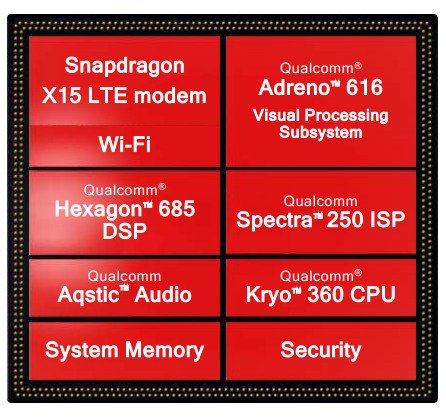Rm3pro will be the best in its Segment. https://t.co/MHFxyJsKy1
— Madhav Sheth (@MadhavSheth1) April 12, 2019
Realme is vigorously grabbing the smartphone market shares, especially in the sub-$250 (~₹17,000) range in India. Once a open playground for Xiaomi (rather Redmi), the increasingly competitive segment has got a new player – the Realme 3 Pro.
Originally started as a offspring of OPPO, Realme has been targeting to break Xiaomi’s monopoly since the inception. Not only in sales figure, but they are tapping into the key-mantra of the Chinese OEM – community interactions, bang for budget phones and viral marketing.
We're turning 1 on 4th May and we want to celebrate it with all our 6M fans! Share a crazy picture showing your realme 2, realme 2 Pro or realme 3 using #realmeanniversary and guess what's the big surprise coming your way. pic.twitter.com/JLJRJWRWsf
— realme (@realmeIndia) April 9, 2019
Heck, the phonetic similarities between ‘Redmi’ and ‘Realme’ are enough to get the vibe!
In October 2018, Realme 2 Pro was launched. Featuring some impressive specifications under a pocket friendly price tag, the phone became the first model in their product portfolio to get the green light for bootloader unlocking.
Straight from the meeting room: RM will unlock the bootloader and release the kernel source for RM1 as well in first quarter of 2019, RM2pro BL unlocking have been confirmed already.
— Madhav Sheth (@MadhavSheth1) November 21, 2018
Yet another move to pull the crowd from Xiaomi’s influence!
While aftermarket developments are indeed an interesting move, it can attract a very little portion of the potential chunk of consumers. Releasing new phones with upgraded specs, on the other hand, is proven to be a useful tactics to get the attraction.
Realme is well aware of that and they are now trying to exploit it with a new successor aka the Realme 3 Pro. Funky marketing methods like boatloads of teaser or blind sales have already generated huge hypes around the upcoming phone with still-uncertain specifications.
How about playing #Fortnite on #realme3Pro? I believe #realme3Pro will be the 1st in its segment that can directly support it. Tried to play this game on some latest "Pro" devices but none of them could manage. When it comes to speed, chipset matters.
— Madhav Sheth (@MadhavSheth1) April 10, 2019
RT to win 1 Rm3pro. pic.twitter.com/j5SKOrXA2g
Well, looks like Xiaomi’s throne has indeed taken a serious shock as Manu Kumar Jain decided to declare a tweet war against Realme.
Recently a brand has started talking about Qualcomm SD 710.
— Manu Kumar Jain (@manukumarjain) April 15, 2019
Here's the thruth: it's a one year old processor! We launched a phone with SD 710 (globally) in Q2 2018.
SD 675 is the latest one: 16% faster than SD 710!! Check out Antutu scores.#WhyLaunch1YearOld? RT if you agree. pic.twitter.com/avhrMbgq4n
Let it be very much clear from here: the presence of Snapdragon 710 SoC in Realme 3 Pro has not been officially declared anywhere. But the teasers and leaks are certainly backing the proposition.
Manu’s claim about Snapdragon 710 is indeed valid. Xiaomi launched Mi 8 SE coupled with SD710 in June 2018; merely months after Qualcomm announced this particular SoC.

The associated hashtag (#WhyLaunch1YearOld) is, however, going to be bummer for Xiaomi itself. Allow me to share a little history lesson with you.
Qualcomm announced Snapdragon 625 platform alongside 435 and 425 back in February 2016. The US chipmaker put eight low-power Cortex A53 cores in the SD625 SoC, making it one of the most energy-efficient midrange platform at that time.
https://youtu.be/mbrnnOwzTBY
Xiaomi is known for quickly adopting newer Qualcomm chipsets in their phones. Without breaking the pattern, the Chinese OEM launched Redmi 4 Prime (codename: markw) in China in November 2016, featuring the newly released Snapdragon 625.
Global Xiaomi fans got the first taste of this SoC with the release of Redmi Note 4(X) (codename: mido) in Q1 of 2017. The phone was an instant success, as they sold close to 10 million units in that year.
Fact - As many as 9,624,110 units of Redmi Note 4 were sold in 2017 #GiveMe5 pic.twitter.com/Nj0NdVuPnB
— Redmi India (@RedmiIndia) February 14, 2018
2017 was an eventful year for Xiaomi, as the OEM collaborated with Google and globally launched their first Android One phone, i.e. the Mi A1 (codename: tissot). It was a straight out rebrand of China exclusive Mi 5X (codename: tiffany). Guess the SoC used in these phones?

Over the period of 2017 and 2018, Xiaomi launched 5 more phones based on the same platform. Yes, a total of 8 phones in their portfolio are powered by Qualcomm Snapdragon 625. The remaining phones are as follows:
- Mi Max 2 (codename: oxygen)
- Redmi S2/Y2 (codename: ysl)
- Redmi 5 Plus/Note 5 (codename: vince)
- Redmi 6 Pro (codename: sakura)
- Mi A2 Lite (codename: daisy)
Mi A2 Lite is a rebranded version of Redmi 6 Pro.
At the announcement gala of Redmi Note 7 in New Delhi, India, the company mocked itself regarding their ‘fetish’ about Snapdragon 625 (seek to the 22:42 mark manually if the video doesn’t start from that point).
Well well well, 2016-2018 – how many years are there, Xiaomi?
There was a time when Samsung single-handedly purchased the bulk of the top end Qualcomm chips for their Galaxy S and Note lineup. Other OEMs were forced to schedule the launch of the yearly flagships due to the lack of supply.
In 2019, Xiaomi literally ended the tradition and unveiled Mi 9 on the same date of the global release of Galaxy S10 lineup. Guess they are getting pretty much savvy in this battle of SoCs.

End of the day, monopoly is bad for customers. A fair competition is always welcomed for better product offerings.
Like you guys, Team PiunikaWeb is eagerly waiting for the Realme 3 Pro as well!
PiunikaWeb is a unique initiative that mainly focuses on investigative journalism. This means we do a lot of hard work to come up with news stories that are either ‘exclusive,’ ‘breaking,’ or ‘curated’ in nature. Perhaps that’s the reason our work has been picked by the likes of Forbes, Foxnews, Gizmodo, TechCrunch, Engadget, The Verge, Macrumors, and more. Do take a tour of our website to get a feel of our work. And if you like what we do, stay connected with us on Twitter (@PiunikaWeb) and other social media channels to receive timely updates on stories we publish.



